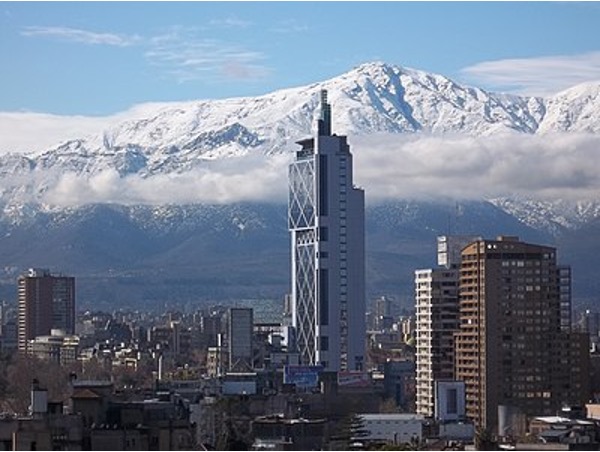Expanding Collaborations in Latin America: Dean of College of Agriculture Visits Chile

Patricia Stock, dean of the College of Agriculture, made several stops in Chile to discuss the agricultural industry, the challenges faced by farmers, and to discuss possible solutions.
Chile and California have a lot in common—a coastline along the Pacific Ocean, fertile central valleys with diverse crops including a world-renowned viticulture industry, and forest and mountain ecosystems. We also share the challenges of intense drought and forest fires, which affect the quality of life including their impact on food security.
Last September, I traveled to Chile where I spent 12 days visiting various academic and research institutions. The purpose of this visit was multifold: to train students and scientists on molecular techniques and phylogenetics used in nematology and to establish collaborations with the college of agriculture and the Chico State campus.
My first stop was Santiago, Chile’s capital, where I visited the headquarters of the National Institute of Agricultural Research (INIA) in the Providencia area. This is a beautiful neighborhood with modern skyscrapers, tree-filled streets, and a commercial and gastronomic hotspot.
At INIA, I met with leaders and various representatives to sign a Memorandum of Understanding (MOU) that will bring the opportunity for students and faculty of the College of Agriculture at Chico State to engage in research collaborations and educational exchanges.
While in Santiago, I also visited Pontificia Universidad Católica (PUC) where I met with the Dean of the College of Agriculture and Natural Resources, Rodrigo Figueroa Espinoza, to discuss common goals and needs in Mediterranean agriculture. We focused on climate change and the myriad challenges agriculture is facing in Mediterranean climate regions—like those in California and Chile.
After Santiago, I headed south, where I spent a week in Temuco, a town located in the Araucania Region in southern Chile. I was hosted by Dr. Patricia Navarro who is the lead of the Insect Science Laboratory in Carillaca, one of INIA’s regional centers. There, I visited with the Center’s director and other research leaders and provided training to the members of the Insect Science lab on nematode molecular diagnostics methods for the identification of insect pathogenic nematodes.

As a nematology expert, I was invited to give a seminar on “Foliar nematodes in strawberries as an emergent pest in Chile” that was broadcasted to over 200 stakeholders. Foliar nematodes were recently discovered as a major pest problem in Chile. The seminar provided information on management and prevention practices, from early field evaluation of soil and identification of symptoms in plants to management techniques such as fumigation and cultural practices.
While in Temuco, I also visited Universidad de la Frontera (UFRO), which is considered one of the top public universities in Chile. I was invited to give a seminar to graduate students in the Molecular Biology program on the “use of transcriptomics analysis to assess host-symbiont interactions considering insect pathogenic nematodes and their bacterial symbionts.” Transcriptomics, a relatively novel molecular approach, allows the identification of genes and pathways that respond to and counteract biotic and abiotic environmental stresses.
I also visited a private university, Universidad Catolica Temuco (UCT), where I met with the International Affairs team to discuss potential collaborations for instruction and dual degrees in agriculture between our respective universities.
The last stop on my trip was the city of Valdivia, located at the confluence of the Calle-Calle and Cau-Cau rivers, and about nine miles from the Pacific coast. Besides tourism, this region is renowned for wood-pulp manufacturing, forestry, metallurgy, and beer production.
Valdivia is also the home of the Austral University of Chile, where I visited the College of Agronomy and Food Science. I met with the Director of the Experiment Station, Juan Pablo Kein, and other members of the College to discuss collaborations between this Experiment Station and the College of Agriculture, with particular emphasis on animal production and nutrition and food sustainability.
My time in Chile seemed to go by quickly. But it was a very productive trip that brought a new international agreement to our Chico campus and opened the doors for numerous future collaborations and opportunities for our students and faculty in Chico State’s College of Agriculture to expand opportunities for research and experiential learning and to facilitate the exchange of faculty and students.


